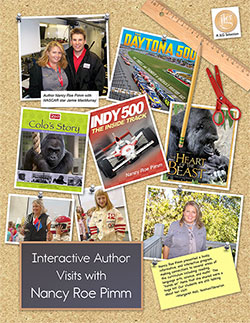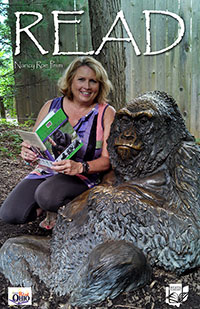Reviews
FLY, GIRL, FLY: SHAESTA WAIZ SOARS AROUND THE WORLD

From School Library Journal
K-Gr 3-Pimm’s debut picture book introduces readers to an inspirational young pilot named Shaesta Waiz, who was born in a refugee camp in Afghanistan. Waiz’s family was able to break free from the camp and move to America. Waiz, who grew up in California, defied expectations in many ways. She overcame language barriers at a young age, studied hard to become the first in her family to graduate from college, and became the first certified female pilot from Afghanistan. At the age of 30, she became the youngest woman in history to fly a single-engine aircraft around the world. Waiz’s story encourages children to never give up. This book could serve as an engaging read-aloud or an enjoyable solo reading experience. Bye’s colorful illustrations are emotive and elegant. Readers will be inspired to chase their own dreams. An author’s note and a personal note to children from Waiz are included. VERDICT Recommended for any classroom, library, or home collection.Kristin Unruh, Siersma Elem. Sch., Warren, MIα(c) Copyright 2011. Library Journals LLC, a wholly owned subsidiary of Media Source, Inc.
Bonded by Battle
 Kirkus Review
Kirkus Review
Although dogs served as mascots during the Civil War and World War I, it wasn’t until World War II that they were trained to work for the military.
Pimm provides an overview of the lives and work of several of these smart companions. After the success of dogs in World War II they would again be used in Korea, Vietnam, and wars that followed. Pimm uses the stories of individual dogs to focus her survey. Many of those dogs began life as family pets but were donated to the military to fill a need for working dogs. More recently, specially bred service dogs have been trained to detect hidden land mines and concealed weapons and for search and rescue. Although dogs were returned to their families after World War II, tragically, nearly all of the approximately 5,000 that served in Vietnam were left behind. That sad statistic is illustrated by the story of Clipper, a German shepherd who loyally served there. Since the passage of Robby’s Law in 2000, many of these dogs are offered for adoption at the ends of their careers. A few black-and-white photographs are included in most short chapters. Extensive backmatter rounds out an accurate and fascinating presentation.
School Library Journal
Gr 5 Up—Students of military history and dog lovers rejoice. Pimm presents a brief but informative examination of canines’ role in the military, going back as far as 4,000 BCE. The author briefly mentions dogs in the Napoleonic Wars before moving on to 19th- and 20th-century conflicts in which the United States has been involved. Pimm points out that animals associated with military units were usually mascots (e.g., Old Abe). The Great War’s Sergeant Stubby started out as a mascot but became a decorated military working dog. A chapter on “war refugee” Rin Tin Tin is also included. The author explores the U.S. Military Working Dog program by focusing on how different dog/handler pairs participated in various wars. An interesting discussion on whether animals should receive service awards and medals is featured. The text reads well, and footnotes are plentiful. An author’s note and back matter conclude the work. Pair this with Rebecca Frankel’s War Dogs: Tales of Canine Heroism, History, and Love or Ace Collins’s Man’s Best Hero: True Stories of Great American Dogs. VERDICT A sure bet wherever military and canine titles are popular.
—Eldon Younce, Anthony Public Library, KS
Flying Solo—The Jerrie Mock Story
 Booklist Review
Booklist Review
On the cover of this biography, Geraldine Mock looks like a modest mid century housewife. Appearances, though, can be deceiving. Jerrie Mock was a fearless female, who acquired a love of flying as a young child, and became the first woman to fly solo around the world in 1964. Out of personal interviews with
Mock, held just before her death in 2014, and the recollections of her loved ones, Pimm weaves a narrative of a young girl’s early aspirations to become a pilot, the tension between domestic life and love of adventure, and each leg of her 29-day, circumnavigational journey. Asides in the margins discuss common piloting procedures in Mock’s time and today. A glossary, a timeline, and several maps and images put Mock’s accomplishments and travels in context and touch on several themes of geography.
This is a high-interest biography of a woman who is less of a household name than her idol, Amelia Earhart, but no less gutsy and accomplished.
— Erin Anderson
COLO’S STORY, The Life of One Grand Gorilla
Kirkus Reviews
A surprise baby, the first zoo-born gorilla in the world, put the Columbus, Ohio, zoo on the map. Now well over 50, Colo has entertained zoo-goers, taught researchers, spurred the study and protection of gorillas in the wild and mothered five subsequent generations of gorillas now in zoos around the county. This chronicle of Colo’s life includes stories of important events and plentiful details of her daily routine. A busy design surrounds substantial text and includes numerous black-and-white and color photos taken at the zoo. Readers will be drawn in by the events of her birth, including the mouth-to-mouth resuscitation needed to revive the newborn baby found on the concrete cage floor. Raised and clothed like a human baby, she eventually became so strong and strong-willed she was caged like the other gorillas in the zoo and provided with a wild-caught mate. Although she never nursed her own babies, she did nurture grandchildren. Over the years, and with the advice of Dian Fossey, who had studied gorilla behavior in the wild, there were changes in the way gorillas were housed in Ohio and around the country. Colo and others were given a new, more interesting environment and allowed to live in family groups. Sidebars explain trading and breeding policies of the Association of Zoos and Aquariums, gorilla mothering and gorilla communication. The book ends with a family tree and photo scrapbook. (endnotes, recommended reading, bibliography) (Nonfiction. 10-14)
Indy 500
 Children’s Bookwatch, September 2004
Children’s Bookwatch, September 2004
Indy 500: The Inside Track by Indy 500 by Nancy Roe Pimm includes photography from The Indianapolis Motor Speedway enhancing a text specifically written to engage the interest of young readers ages 9 through 12. An information-packed guideline that teaches young readers about the basic history of the Indianapolis 500 car races, the demands placed upon race car drivers, the mechanical improvements that have made race cars safer and speedier, the meanings of the various flags, and much more, Indy 500 is as fascinating and educational for adults as it is for young people. The no-nonsense narration does not talk down to the reader, and the splendid full-color photographs highlight this engaging introduction to the fast-paced auto racing world.
MA Children’s Lit, Nancy Garhan Attebury
What is three cars wide and eleven rows deep? It’s the line-up for the annual rip-roaring race known as the Indy 500. The book’s attractive red, white and yellow cover depicting a race car running toward the reader will pique interest of more than just race enthusiasts. In this fast paced book, Pimm, whose husband is a racer, covers everything from the pre-race to the winner’s circle. The sharp, clear photos flanked by detailed description are possible only because of her inside connection. Crisp, clear explanations hold many informative facts from the past to today. Who would imagine that the top speed, 74.6 miles per hour, in the first race in 1911, could accelerate to a zipping 185.981 reached in 2000? Chapter titles are shown as a blur of words and support the race idea of speed. In addition, a gray and white-checkered border helps the reader maintain a race mindset. Eleven chapters run the gamut of topics from the car’s cockpit to its frenzied pit stops. The author’s gift to keep things moving makes this a book to grab the attention of even the most reluctant readers. Girls and boys can climb into the driver’s seat when they choose to read this book, which is a Junior Library Guild Selection.




